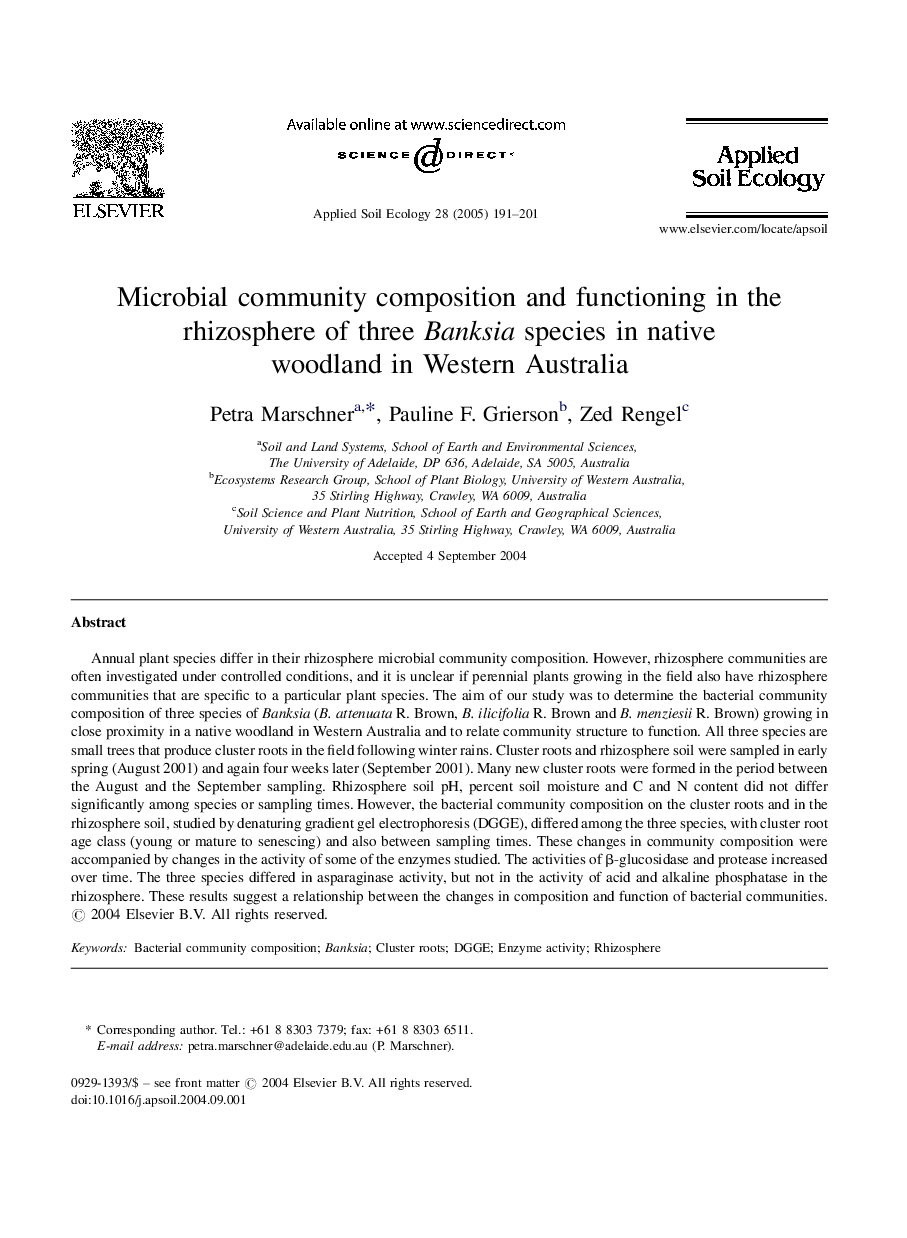| Article ID | Journal | Published Year | Pages | File Type |
|---|---|---|---|---|
| 9445249 | Applied Soil Ecology | 2005 | 11 Pages |
Abstract
Annual plant species differ in their rhizosphere microbial community composition. However, rhizosphere communities are often investigated under controlled conditions, and it is unclear if perennial plants growing in the field also have rhizosphere communities that are specific to a particular plant species. The aim of our study was to determine the bacterial community composition of three species of Banksia (B. attenuata R. Brown, B. ilicifolia R. Brown and B. menziesii R. Brown) growing in close proximity in a native woodland in Western Australia and to relate community structure to function. All three species are small trees that produce cluster roots in the field following winter rains. Cluster roots and rhizosphere soil were sampled in early spring (August 2001) and again four weeks later (September 2001). Many new cluster roots were formed in the period between the August and the September sampling. Rhizosphere soil pH, percent soil moisture and C and N content did not differ significantly among species or sampling times. However, the bacterial community composition on the cluster roots and in the rhizosphere soil, studied by denaturing gradient gel electrophoresis (DGGE), differed among the three species, with cluster root age class (young or mature to senescing) and also between sampling times. These changes in community composition were accompanied by changes in the activity of some of the enzymes studied. The activities of β-glucosidase and protease increased over time. The three species differed in asparaginase activity, but not in the activity of acid and alkaline phosphatase in the rhizosphere. These results suggest a relationship between the changes in composition and function of bacterial communities.
Related Topics
Life Sciences
Agricultural and Biological Sciences
Ecology, Evolution, Behavior and Systematics
Authors
Petra Marschner, Pauline F. Grierson, Zed Rengel,
